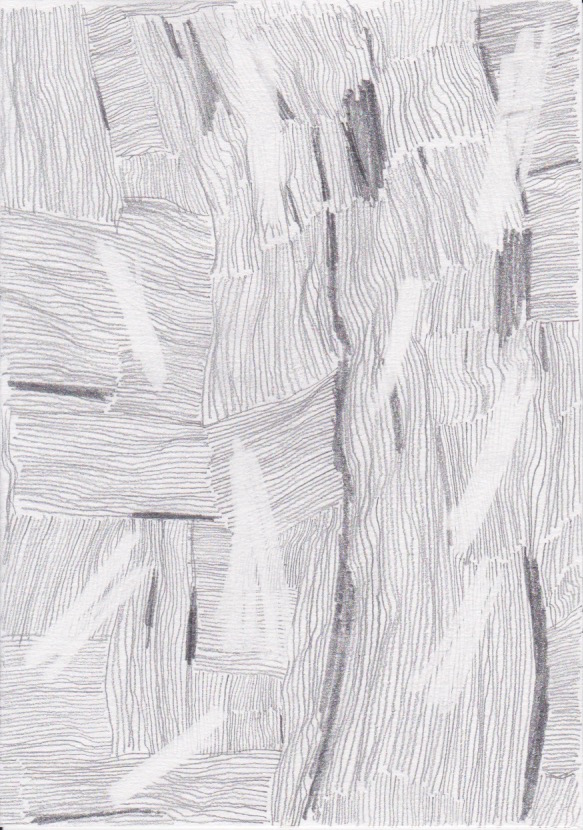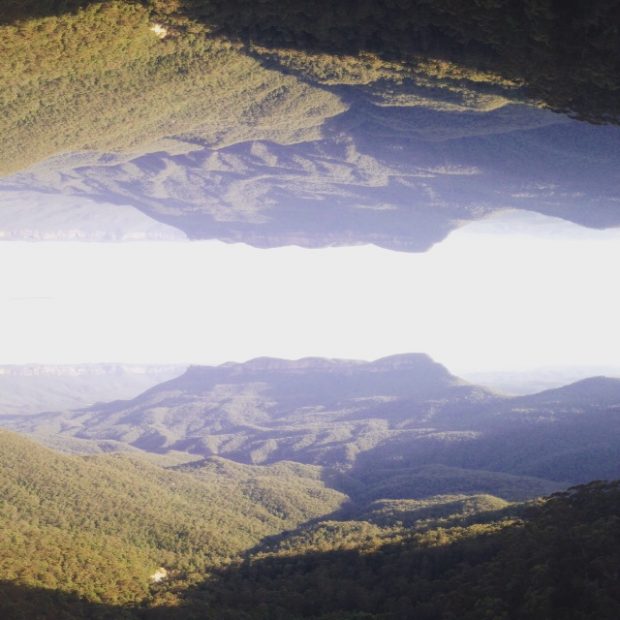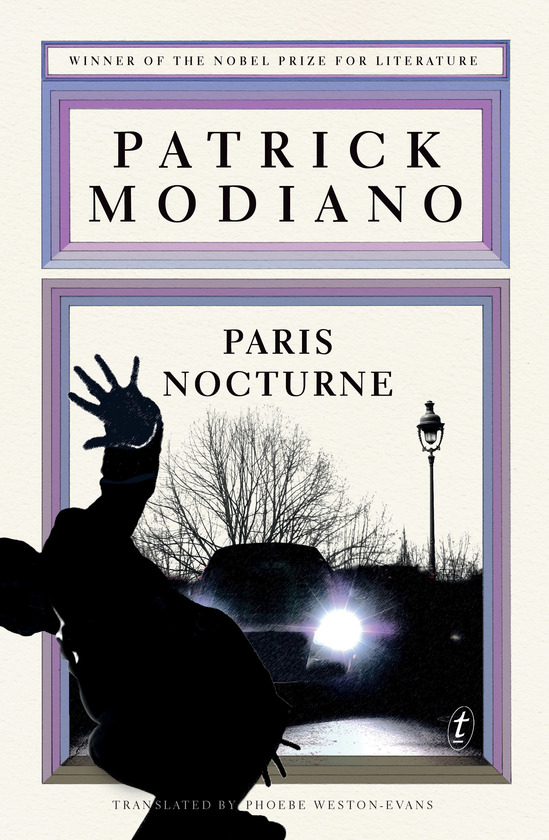Followed by Patrick Modiano’s Dog: What I’ve Been Reading, Last Part
by Luke Beesley
 Having just finished Cesar Aira’s Shantytown, which in the end was probably my least favourite Aira, I’ve just begun Beauty is a Wound by Indonesian Eka Kurniawan, mostly because of how much I enjoyed the tinge of the absurd in these two sentences, on the second page, which follow other sentences about a character, Dewi Ayu, who has just risen from the grave: “A woman tossed her baby into the bushes and its father hushed a banana stalk. Two men plunged into a ditch, others fell unconscious at the side of the road, and still others took off running for fifteen kilometers straight without stopping.”
Having just finished Cesar Aira’s Shantytown, which in the end was probably my least favourite Aira, I’ve just begun Beauty is a Wound by Indonesian Eka Kurniawan, mostly because of how much I enjoyed the tinge of the absurd in these two sentences, on the second page, which follow other sentences about a character, Dewi Ayu, who has just risen from the grave: “A woman tossed her baby into the bushes and its father hushed a banana stalk. Two men plunged into a ditch, others fell unconscious at the side of the road, and still others took off running for fifteen kilometers straight without stopping.”
In my wandering description of my recent fiction reading (see my last two blog entries) I’ve left out a lot of the fiction. (Even now, after writing this, there must be some books missing?) I never mentioned Ben Lerner: candy-good. I re-read a few favourite novels (The Plains, Murnane; The Crossing, McCarthy) and I finally finished Blood Meridian (took me 3 years – I’m quite squeamish – a few bloody pages at a time). I raced though Renata Adler’s Speedboat fragments and Dan Beachy-Quick’s meta-boggling An Impenetrable Screen of Purest Sky, boom boom. I dipped into Lydia Davis’ Collected Stories and returned to Donald Barthelme’s stories and couldn’t stop reading the ridiculously good recent collection of David Brook’s short stories, Napoleon’s Roads which also prompted an enjoyable sidetrack looking up the photography of Michael Kenna. I caught myself smiling maniacally while waiting at the lights listening to Delillo’s Underworld on audiobook in the car. I blushed when I went blank on the lead character of Emily Bitto’s fabulous The Strays in the middle of telling her how much I enjoyed the book. I enjoyed also the understated wonderful The Life of Houses by another Melbournian, Lisa  Gorton. I spent a week at Varuna in the Blue Mountains last year and picked up Miles Allinson’s Fever of Animals. I put it down and opened the drawers of Eleanor Dark’s hutch (where writers-in-residency are invited to leave a draft of their work) to find, in the first drawer I opened, a page of Miles Allinson’s Fever of Animals. It’s about a painter called Miles who sees a painting in a Melbourne restaurant and ends up trying to trace the history of a Romanian surrealist painter, Emil (anagram of Miles, not?) Bafdescu. When I returned to Melbourne I considered going into the bookstore where Allinson works and just yelling out “Bafdescu!” before retreating behind a bookshelf. Or interviewing Phoebe Weston-Evans, the Melbourne-based translator of Patrick Modiano’s Paris Nocturne, published in Australia by Text, about that transformative, shivery scene, three-quarters of the way through the novel, where the sentences seem to follow both a dream and a little dog, or a dog follows Modiano, or the reader follows a shadow along, a sort of moving in and out comprehension like the light siphoned through tree branches and
Gorton. I spent a week at Varuna in the Blue Mountains last year and picked up Miles Allinson’s Fever of Animals. I put it down and opened the drawers of Eleanor Dark’s hutch (where writers-in-residency are invited to leave a draft of their work) to find, in the first drawer I opened, a page of Miles Allinson’s Fever of Animals. It’s about a painter called Miles who sees a painting in a Melbourne restaurant and ends up trying to trace the history of a Romanian surrealist painter, Emil (anagram of Miles, not?) Bafdescu. When I returned to Melbourne I considered going into the bookstore where Allinson works and just yelling out “Bafdescu!” before retreating behind a bookshelf. Or interviewing Phoebe Weston-Evans, the Melbourne-based translator of Patrick Modiano’s Paris Nocturne, published in Australia by Text, about that transformative, shivery scene, three-quarters of the way through the novel, where the sentences seem to follow both a dream and a little dog, or a dog follows Modiano, or the reader follows a shadow along, a sort of moving in and out comprehension like the light siphoned through tree branches and  spilled inconsistently over the footpath. Potts Point. To begin my 2015 Modiano phase I walked into a bookshop and bought The Search Warrant. But it wasn’t that simple. I heard someone on the radio reviewing Little Jewell, and Paris Nocturne, the two recent Text-published Modianos, and the reviewer seemed frustrated because Modiano, he said, seemed to write the same novel over and over, circling around the German occupation of France during the second world war; Modiano folding back to that time and writing around it, certain memories, plots, again and again, which I thought sounded great. I was in Sydney at the time and I went into a Potts Point bookshop near my hotel to buy one of the recent Text-published books with gorgeous covers designed by genius, Melbourne-based, W. H. Chong. I took Paris Nocturne to the counter and was then persuaded by the bookseller to instead start Modiano with his earlier novel, The Search Warrant (also published with the title Dora Bruder).
spilled inconsistently over the footpath. Potts Point. To begin my 2015 Modiano phase I walked into a bookshop and bought The Search Warrant. But it wasn’t that simple. I heard someone on the radio reviewing Little Jewell, and Paris Nocturne, the two recent Text-published Modianos, and the reviewer seemed frustrated because Modiano, he said, seemed to write the same novel over and over, circling around the German occupation of France during the second world war; Modiano folding back to that time and writing around it, certain memories, plots, again and again, which I thought sounded great. I was in Sydney at the time and I went into a Potts Point bookshop near my hotel to buy one of the recent Text-published books with gorgeous covers designed by genius, Melbourne-based, W. H. Chong. I took Paris Nocturne to the counter and was then persuaded by the bookseller to instead start Modiano with his earlier novel, The Search Warrant (also published with the title Dora Bruder).
I’m always swayed by a book’s cover; the cover of The Search Warrant was pretty terrible but I acquiesced given the bookseller’s enthusiasm. I finished it in Brisbane a week later and it really is an incredible novel, slowly and carefully moving (pace-wise and emotion-wise). I can understand the bookseller’s motives, now. The Search Warrant – which is a little less elusive and a little more directly linked to the holocaust and to Paris in the 1940s – casts an intense shadow over the two more recent dreamy novels. Oh, here it is, the moment, the dog, in Paris Nocturne:
At first, the dog stayed about ten metres behind me and then gradually it came closer. By the time we reached the railings of the Galliera Gardens, we were walking side by side. I don’t know where I’d read – perhaps in a footnote in The Wonders of the Heavens* – that at certain hours of the night, you can slip into a parallel world: an empty apartment where the light wasn’t switched off, even a small dead-end street. It’s where you find objects lost long ago: a lucky charm, a letter, an umbrella, a key, and cats, dogs and horses that were lost over the course of your life. (120)
* seems like a cross between Malick’s Days of Heaven, as discussed last week, and his 2012 film, To the Wonder. Just sayin’.
Photo of Blue Mountains and ‘Reading’ drawing © by Luke Beesley